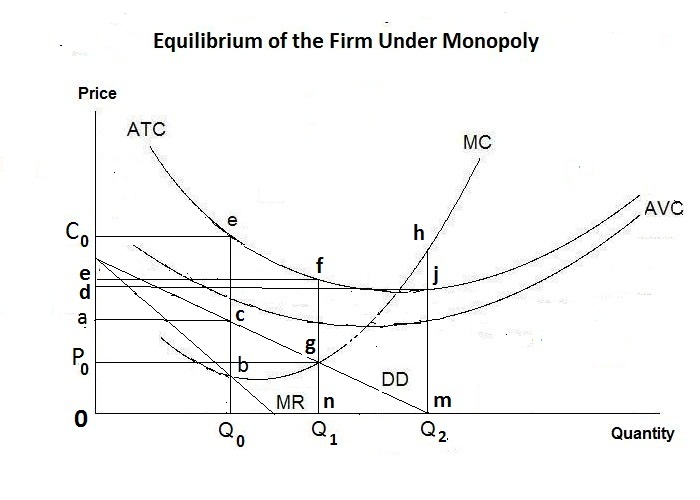
Consider a situation where the monopoly producer of a particular service could not make a profit and will therefore not supply the service. Let its returns and costs be given by the figure below.

How should the government here maintain the social interest? What output should be produced?
To minimize the firm's losses, production must occur at output Q0. At this output, the government will lose the area C0 e c a. But a social gain equal to c b g could be obtained by producing output Q1, in which case the government will lose the somewhat larger area e f g P0. At this optimal output the price received will equal the marginal cost g n.
Suppose, however, that the product in question happens to be one like police services that government makes freely available to the community. The quantity demanded will be Q2 while that supplied will be only Q1. If the individuals receiving the output are those who value the output by the area under the demand curve to the left of output Q1, the value of the additional benefit as compared to the minimum government expenditure point will still be the area e f g P0 with the marginal social return equalling the marginal cost. However, if individuals whose valuation is to the right of output Q1 happen to receive some of the output, a portion of the area under the demand curve and over the marginal cost curve to the left of Q1 will be lost, thereby reducing the social benefit.
If the majority of the voting public really believes that police services should necessarily be freely available to all members of the public, the government should producd output Q2 at which the gross benefit of police services will equal the entire area under the demand curve and the excess marginal cost of output above Q1 can be ignored as a necessary and justifiable cost of providing the optimal level of police services. The amount of resources used up as a result of this decision will be equal to the area g h m.